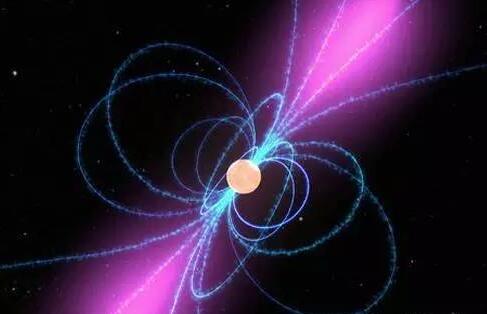The China Academy of Space Technology has announced plans to launch the world's first X-ray pulsar navigation satellite (XPNAV-1) in November, Xinhua reported.
据新华社报道,中国空间技术研究院已经宣布,计划将于11月份发射全球首颗X射线脉冲星导航卫星(XPNAV-1)。
The move brings autonomous spacecraft navigation and a more precise deep-space GPS one step closer to reality.
这一举措将使得航天器自主导航、以及更加准确的深度空间GPS定位进一步接近现实。
X-ray pulsar navigation is an innovative navigation technique wherein periodic X-ray signals emitted from pulsars are used to determine the location of a spacecraft in deep space.
X射线脉冲星导航是一种创新性的导航技术,其中脉冲射电源可以发出周期性的X射线信号,可以用来在深度空间中确定航天器的位置。

Current ground-based navigation methods are limited by the time delay between spacecraft and the Earth.
由于航天器和地面接收器之间的时间延迟,目前的地面导航技术受到了极大的限制。
However, for certain type of pulsars, called "millisecond pulsars," pulses of radiation occur with the regularity and precision of an atomic clock.
但是使用被称之为“毫秒脉冲射电源”的装置,脉冲辐射可以具有和原子钟一样的规律性和精度。
As a result, in some scenarios, the pulsar X-ray can take less time to estimate a location. This leads to more precise measurements of a spacecraft's location.
因此,在某些情况之下,X射线脉冲射电源可以用更少的时间来估测物体的位置。这就导致了对航天器位置的更精确测量。
However, since X-rays from pulsars are absorbed by the atmosphere, scientists must launch satellites to continue research of the new technology.
然而,由于脉冲射电源发出的X射线能够被大气所吸收,所以科学家们必须发射卫星来对这一新技术继续进行研究。
According to Shuai Ping, chief scientist behind the research of XPNAV-1 satellite, the key aim of this satellite is to detect the details of X-ray signals of 26 nearby pulsars, and to create a "pulsar navigation database."
据XPNAV-1卫星研究项目首席科学家帅平表示,这颗卫星的主要目的是要检测地球附近26颗脉冲星的X射线信号详细信息,建立一个“脉冲导航数据库”。
This target could be achieved within five to 10 years, Shuai estimates.
据帅平估计,这一目标可以在5到10年之间完成。













